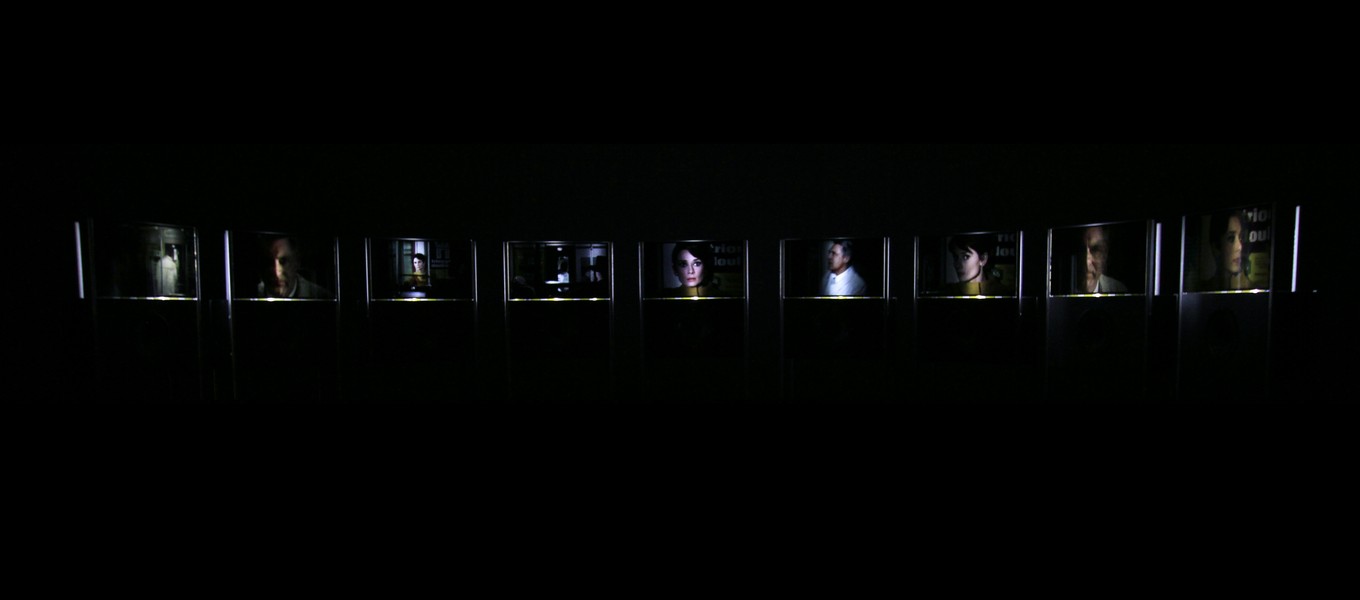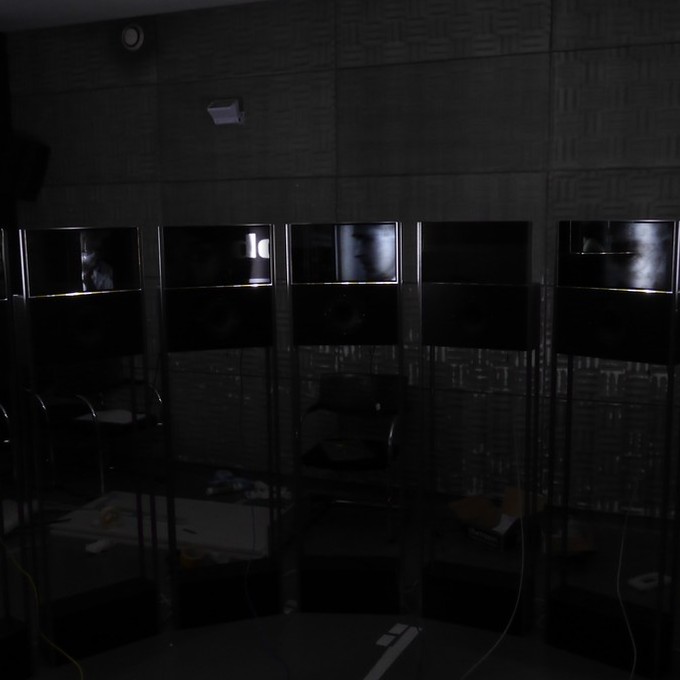Noé Grenier
Triomphe des douleurs - Installation - 2016
présentée dans le cadre de l'exposition Panorama 18



Installation
A head can suffer “a thousand ills” or even “martyrdom” (do we measure what these expressions hide or reveal about that vice-like grapeshot of pain or oppression?). It is reduced to a nothingness – a skull, a void, a black box – so as to support the influx of intensities, of visions, of hallucinations that is performed outside it and cuts through it in successive waves or blocks shutting off any access to god knows what exit. Caught in a vice, it nevertheless struggles on with the resources left to it, with its wiles and limited strategies of appropriation, seeking out that calm spot where thought can regain its footing – the elementary power to resist and oppose its symbolic veto to what Nietzsche, a constant victim of crushing migraines and cephalalgia, described in these terms: “From the nature of my sufferings I must reckon upon a sudden death through convulsions (although I should prefer a hundred times a slow, lucid death , before which I should I should be able to converse with my friends, even if it were more painful).” (Letter to Gast, 11 September 1879, Selected Letters of Friedrich Nietzsche, Doubleday, 1921, p. 122). Noé Grenier knows all there is to know about this wild migration of pain that is migraine (“headache”). All he can try to do – but that is formidable ordeal in itself – is not regulate it but lead it off course, disorient it, by forcing it to follow another plan, where screens (unrespecting opacities) give way to strange lights and fragments of vision in which intensity seems limited but not given up to a trap that proves mortal, screens whose shifts set up surrogate spaces where the chance of an incredible displacement of the rules still seems actual. Hence the imposing apparatus brought into play (every technique invented here corresponds to a freedom for thought won against the darkness, against that tunnel cut off from the daylight), dividing and multiplying the movements of a chase (like the one in Stanley Donen’s Charade, filmed in the Parisian Métro, as headlong as it is fated to repetitive, instantaneous incomprehension, and therefore “damned”) that it seems nothing can stop, and yet that is “thrown off course.” In that place where the obsession with being followed, pursued, tracked down, hunted and banished is experienced as an endlessly looped segment that only the bleeding of a “sudden death” could suspend; in that place between the snares and the recomposed close-ups, a few short breaths can be drawn, when uncontrollable respirations mark out what we must call survival. The migraine migrates through a thousand conduits that are unperceived yet present at each station on this seemingly endless sequence (like a nightmare or a charade).
Noé Grenier stores up escapes, plants their seeds and constructs an open-air ark that, opening its doors after this flood, once again offers the vision of a clear space, not in hock to fear but heartened by a dawn that comes up calmly.
Daniel Dobbels (4 April 2016)
Noé Grenier
Noé Grenier graduated from the Ecole supérieure des Beaux-Arts de Montpellier Agglomération in 2011. Since then, he has concentrated his practice on the re-appropriation of images, either working from the classics of genre cinema or from photographs and videos collected on the internet.
His video practice questions the time constructions specific to each register of images, and the spectator's perception of these same images. With the cut, edit, past process, or with out of sync and repetitions, his works try to "extend the notion of seeing" referring to conceptions of time and movement in Bergson and attempting thus to question the perception of movement in the video image as a "series of still images that one's eye has to activate".
Conscious of the materiality of the image and its document status, Noé Grenier also experiments with transferring digital images through various traditional mediums. He underlines the problems linked to copyright and the frontier between private space and public space on the Internet by confronting the methods of historical representation of photography and video art.
Remerciements
Claire Pollet for the programming Christophe Gregório, Cyprien Quairiat and Etienne Lautem for the help to the construction, Bruno Fleutelot for the help to the composition, Eric Prigent, the educational coordinator, Ramy Fischler, the artist invited professor, Lucie Bercerez, in charge of production.
Daniel Dobbels, Madeleine Van Doren, Arnaud Petit, Gwendal Sartre, Gilles Ribero, Theobald Le Maguer, Andrés Padilla Domene, Mathias Isouard, Akiko Okumura, Theobald Rostagnat, Fabien Zocco, Loris Bardi, Jacky Lautem, Sébastien Cabour, François Bedhomme, Massimiliano Simbula, Aurélie Brouet, Julien Guillery, David Chantreau, François Lescieux, Blandine Tourneux, Maxence Ciekawy, Arnaud Mathieu, Anaïs Boudot, as well as to all the team of Fresnoy.
